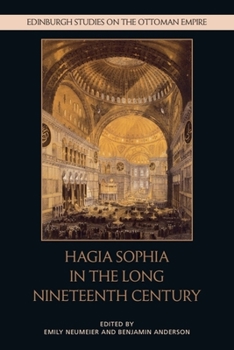Hagia Sophia in the Long Nineteenth Century
Hagia Sophia--a building whose domes have defined Istanbul's skyline for over 1500 years--has led many lives. Initially a church, subsequently a mosque, then a museum, the structure is today a monument of world heritage, even as its official status remains contested. Hagia Sophia's global fame took shape during the long nineteenth century, when Europeans 'discovered' its architectural significance. But what role did local actors play in the creation of Hagia Sophia as a modern monument? This book seeks out the audiences of this building beyond its Western interpreters, from Ottoman officials to the diverse communities of Istanbul. Chronologically bracketed by the major renovation of the structure in the 1740s and its conversion into a museum in 1934, this volume traces the gradual transformation of Hagia Sophia within the Ottoman imaginary from imaret (mosque complex) to eser (monument); that is, from lived space to archaeological artifact.
Format:Paperback
Language:English
ISBN:1474461018
ISBN13:9781474461016
Release Date:December 2025
Publisher:Edinburgh University Press
Length:312 Pages
Customer Reviews
0 rating





